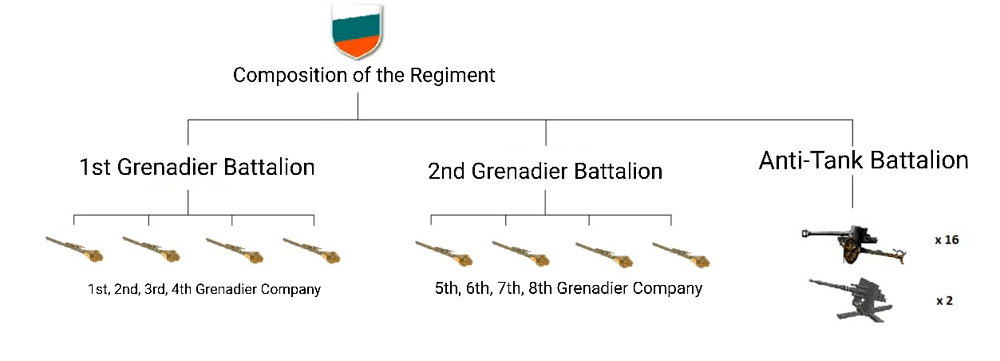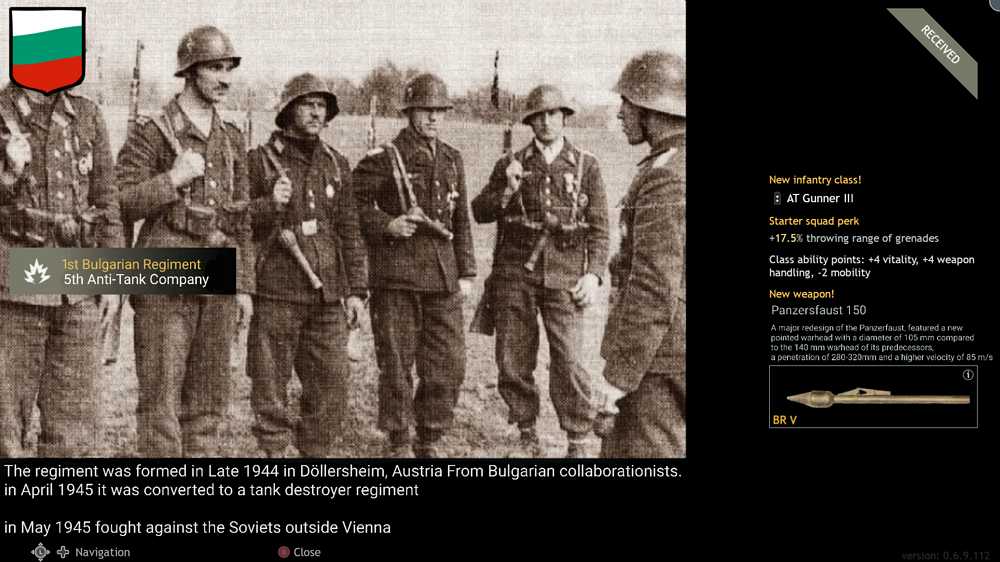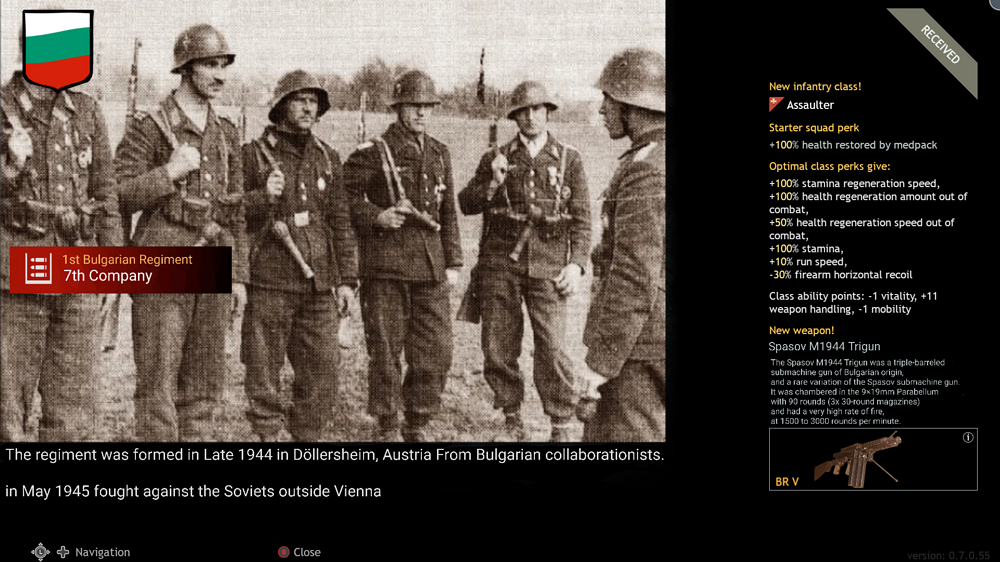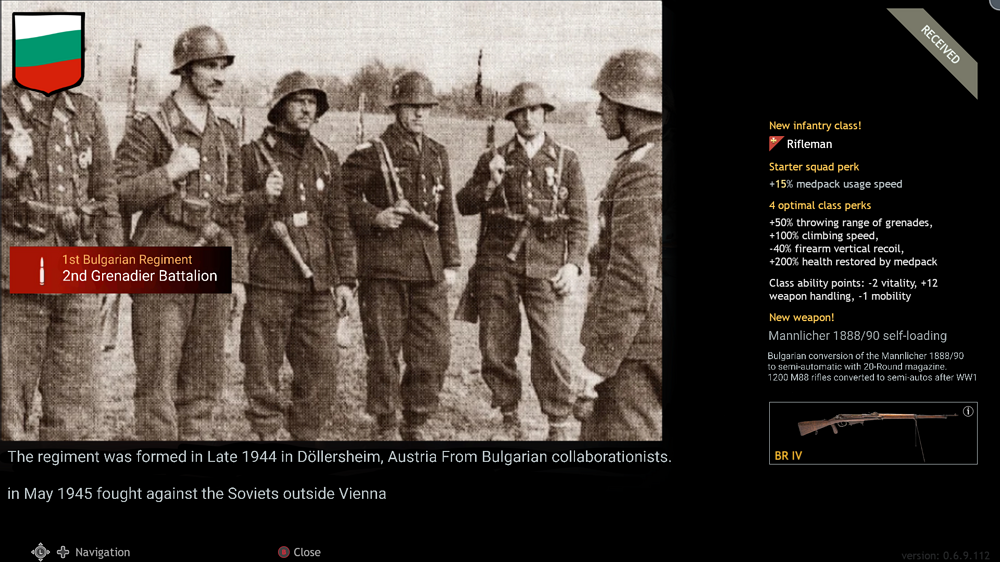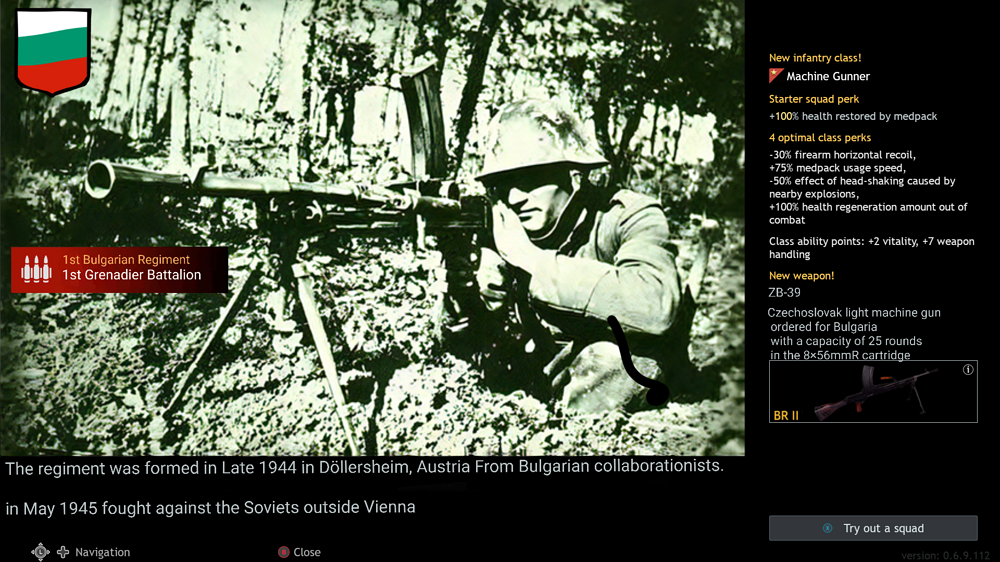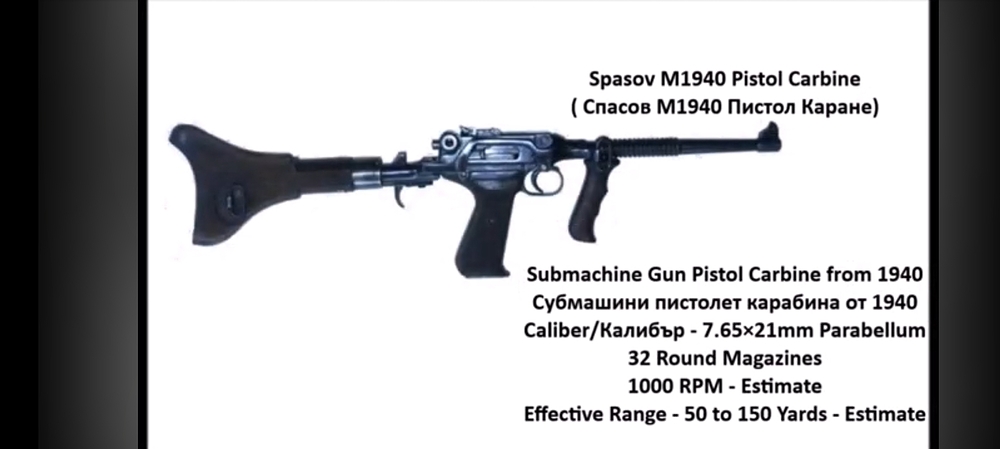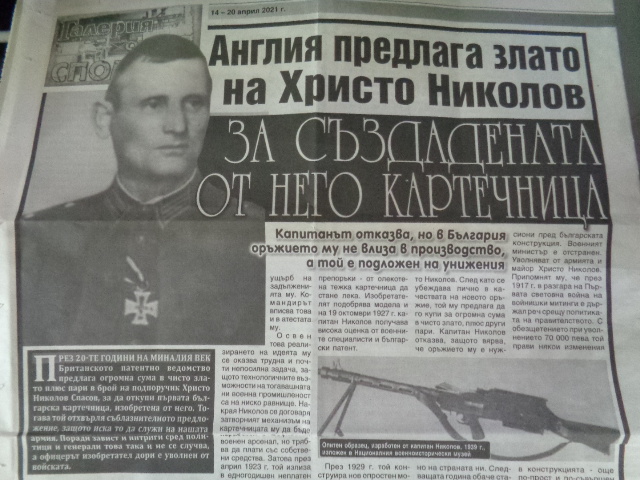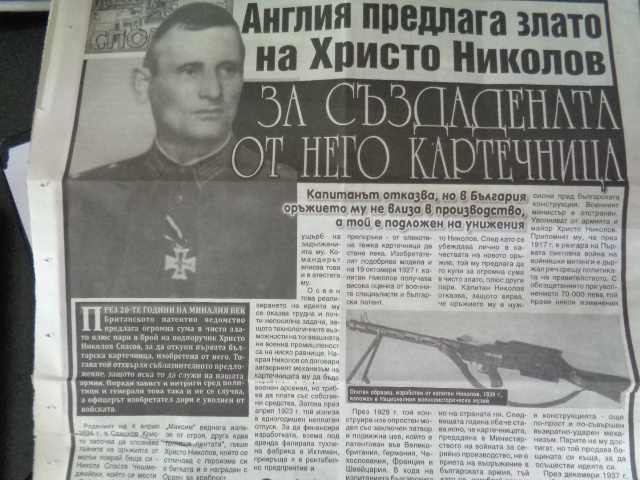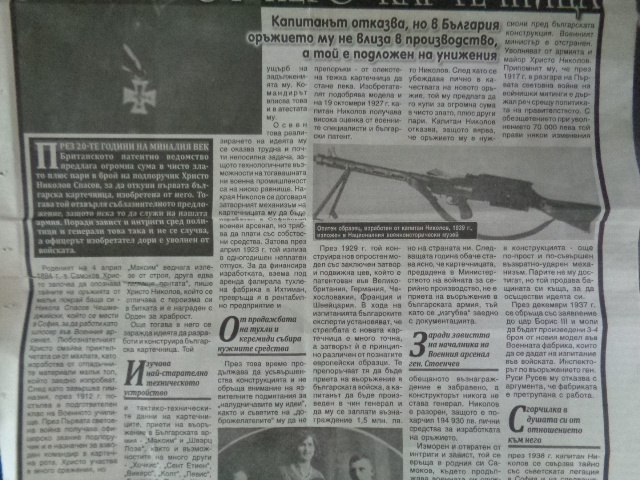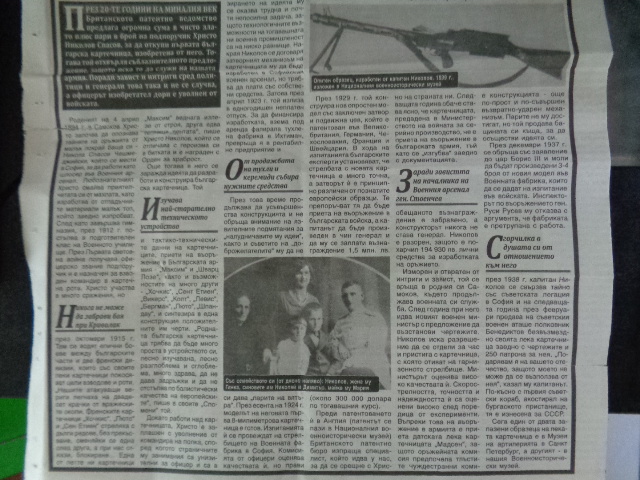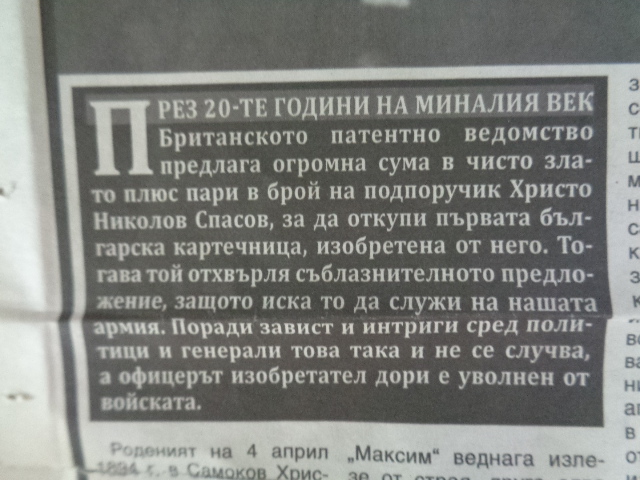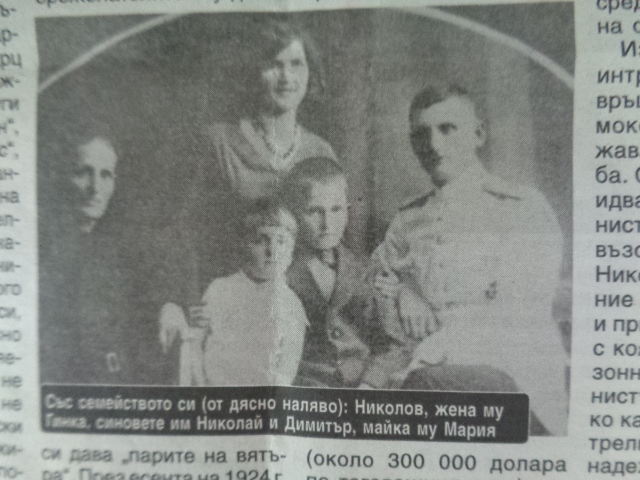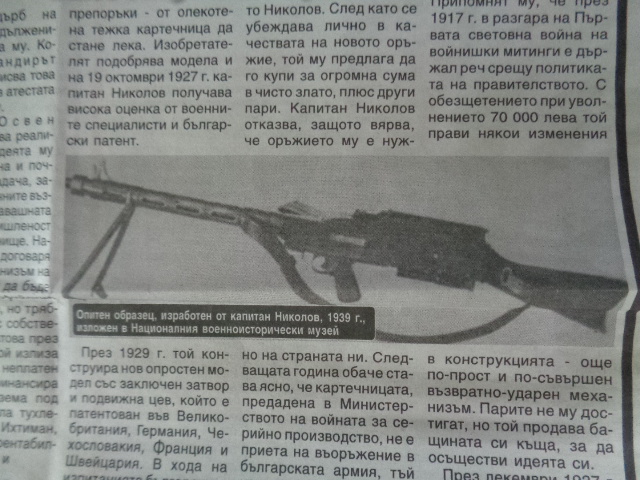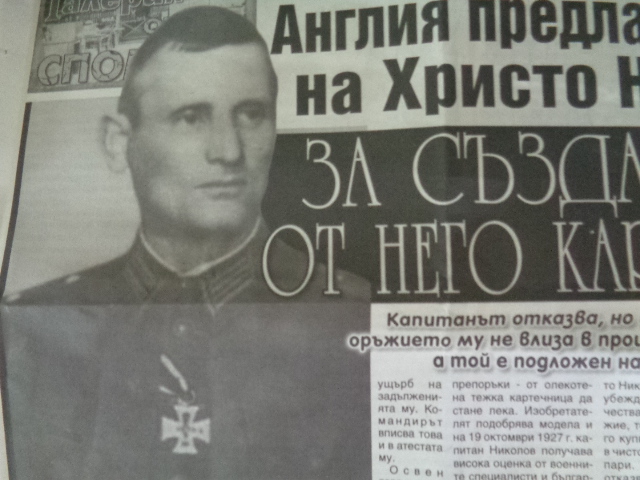Good morning, good afternoon or good night Today I will make a suggestion for the unknown Waffen Grenadier Regiment of the SS (1st Bulgarian)

History of the Waffen Grenadier Regiment of the SS (1st Bulgarian)
The question of forming a volunteer Bulgarian legion within the Waffen-SS was raised by Himmler as early as December 1942. However, the Bulgarian government and personally Tsar Boris III, who were in no hurry to pay for their participation in the Hitlerite “crusade against Bolshevism” with the lives of their soldiers, politely but irrevocably rejected the Reichsführer’s proposal. The communist coup in Bulgaria changed things abruptly. The initiative on the matter completely passed into the hands of Himmler and in the autumn of 1944 he gave the order to begin the formation of a Bulgarian grenadier (infantry) regiment, which in the future should serve to deploy a full-blooded Bulgarian motorized infantry SS division (first Bulgarian grenadier SS division) (Waffen-Grenadier Division der SS /bulgarische Nr 1/). At the same time, the Reichsführer of the SS specified special criteria for the recruitment of Bulgarian volunteers. Former soldiers and officers of the Bulgarian expeditionary forces in Macedonia were not allowed into the ranks of the Bulgarian unit - they went over to the side of the German army during an operation to disarm them in September 1944 - the argument being that they had surrendered “out of fear for their lives” and were therefore not reliable enough (as a rule, they were assigned to the German, Hungarian and Croatian units fighting in the Balkans and in southeastern Europe). Only Bulgarians, mainly military personnel, who had managed to make their way through war-torn Yugoslavia after the September 9 coup, or fugitives and deserters from the Bulgarian units fighting alongside the Soviet army, were allowed as volunteers.
When the Soviet troops invaded Bulgaria on September 8, 1944, several Bulgarian political leaders – nationalists managed to leave the country. In the Vienna Hotel “Imperial” they declared a Bulgarian government in exile with the leader of the People’s Social Movement, Prof. Alexander Tsankov, as chairman, and ministers – Prof. Assen Kantardzhiev (leader of “Warriors for the Advancement of Bulgarianness”), Hristo Stattev (leader of one of the two large wings in the “Bulgarian National Legions”), Col. Iv. Rogozarov, Col. Nikola Kostov
The Waffen Grenadier Regiment of the SS (1st Bulgarian) was formed in late 1944 or early 1945 (probably late 1944) in Döllersheim in Austria,was composed of 25 officers, 56 non-commissioned officers, more than 500 soldiers ,150 students and 12 nurses under the command of General Ivan Rogosarov.
In April 1945, The Soviet troops were advancing on Berlin, and the Wehrmacht urgently needed assistance. Bulgarian Regiment was thrown into the battle, joining the II SS Panzer Corps, which was defending Vienna along the Morava River. On April 4, the brigade received orders to head to the front and began preparing to engage the 46th Soviet Army of the 3rd Ukrainian Front, which was fighting for Bulgaria. However, at the last minute, Rogozarov learned that officer candidate Micho Zlatkov was plotting to destroy the brigade headquarters and then defect to the Soviet side. The colonel immediately launched an operation to find the traitor and soon shot him dead, three rebels were killed and the others were arresting.
The Germans, upon learning of the shooting, immediately dispatched a detachment of field gendarmerie and a Volkssturm unit. The troops demanded the Bulgarians surrender their weapons pending an investigation, but the Bulgarians responded by firing. One legionnaire was killed, and Colonel Rogozarov barely managed to persuade the Bulgarians not to fire. 28 were arrested, 8 of whom were executed by the gendarmes following a court ruling. Only 6 were acquitted. Rogozarov and Brilling spent a month concealing these circumstances from the high command, but it was too late—Vienna and Berlin had fallen, and the Germans held only Prague. Ultimately, the Bulgarians rushed into battle.
Shortly after the internal uprising within the Bulgarian SS Grenadier Regiment failed, Waffen-SS inspectors decided to confiscate the Bulgarians’ few handguns and equip them with Panzerfaust anti-tank weapons.they renamed the unit to Bulgarian SS Tank Destroyer Regiment (SS Panzer Zestörer Regiment Bulgarisches),
Bulgarian SS Grenadier Regiment:
Regimental Staff
SS Light Artillery Company
1st SS Grenadier Battalion
1st SS Grenadier Company
2nd SS Grenadier Company
3rd SS Grenadier Company
4th SS Grenadier Company
2nd SS Grenadier Battalion
5th SS Grenadier Company
6th SS Grenadier Company
7th SS Grenadier Company
8th SS Grenadier Company
Battle of Stockerau
On May 5, 1945, the commander of the II SS Panzer Corps ordered the brigade to advance from Dollersheim and take up defensive positions northeast of Stockerau, the most tank-hazardous defensive line. During the night of May 5-6, the brigade arrived at the ranks of an SS division, the number of which could not be determined. It was assigned its own defensive line, where anti-tank fortifications had not yet been constructed. Colonel Rogozarov began preparing the soldiers for street fighting and urged the civilian population to flee the city as quickly as possible. For this purpose, he allocated the brigade’s transport, accompanied by a company from the 2nd Battalion and a medical team. As it turned out, several men escaped from the brigade, but overall, the legionnaires prepared for battle. Brigade veteran Stoyan Popyankov said after the war that although Germany had already lost the war, he had to demonstrate the strength of his unit to Soviet and German soldiers. Before the battle, the legionnaires began to write the same phrase “Боже пази България” (Bulgarian: God, save Bulgaria) on the walls of their houses more often to strengthen their fighting spirit.
On the morning of May 6, pilot Petr Bochev reported that Soviet troops had gathered on the outskirts of the city—tanks with infantry mounted on their armor and numerous howitzers. A few hours later, he took off again and never returned—according to some, he was shot down and killed in battle. At 9:00 a.m., the first shots began to fire—the Bulgarians encountered units of the very same 46th Army that had been the first to invade Bulgaria. It was against this army that they began their most aggressive fighting, and this tenacity (as well as the resilience of the German SS) prevented the Soviet units from advancing into Stockerau. At 6:00 p.m., the shooting ceased: the Bulgarians had destroyed 14 tanks,IL-2 attack aircraft (with an Ofenrohr) and Two self-propelled guns,the 46th Army had lost 29 armored vehicles in total. More than a hundred Soviet soldiers were killed by Bulgarian legionnaires, and thirty were captured. Rogozarov placed the prisoners in the basement of a warehouse, took their clothes, and locked them there. The Bulgarians also managed to shoot down an Il-2 attack aircraft with an Ofenrohr rocket launcher after it carelessly descended. Bulgarian losses amounted to 98 killed and 46 missing. The wounded were evacuated to German hospitals, but after their capture by Russian units, seven were executed on charges of treason in Sofia on September 29, 1945 (including Georgi Malkov).
That night, the Bulgarian Brigade began its retreat westward. Rogozarov ordered the execution of the prisoners, but Lieutenant Hadzhilalchev refused, for which he was demoted to private but not relieved of command of his company. The remaining SS units in Stockerau were to hold it for another 24 hours (which they did, holding out until the end of May 7), while the Bulgarian Brigade was tasked by the II SS Panzer Corps with occupying and preparing for defense the town of Horn, a key point in the corps’ next defensive line.
In the final days of the war, the advance mobile detachment of the 7th Red Army Division (a self-propelled artillery battalion, two submachine gun companies, and a sapper unit), commanded by Major I. A. Rapoport and Major M. K. Gordienko, tasked with reaching the line of contact with American forces, crossed the Ybbs River near Kümmelsbach, where the detachment’s soldiers captured three serviceable Tiger tanks abandoned by their German crews. Placing the captured Tiger tanks at the vanguard of the column, the detachment continued toward the city of Amstetten. Thanks to the presence of German tanks, the detachment was able to follow the retreating enemy units for some time, catching up and overtaking them. Having overtaken units of the retreating Hungarian division, Rapoport’s detachment caught up with another group of enemy soldiers retreating along the road. This group consisted of Romanians and Bulgarian SS soldiers seeking to surrender to the American army. Seeing Soviet machine gunners landing on the sides of self-propelled guns, the Romanians and Bulgarians dropped their weapons onto the road and scattered
The bombing of Ziersdorf and the disappearance of the 2nd Battalion
Horn was 60 kilometers away, and Rogozarov expected his troops to arrive there by morning. However, numerous retreating German troops were moving along the highway, hampering progress. In the morning, the brigade found itself in Ziersdorf, where a traffic jam formed on the bridge. At that moment, Soviet Pe-2 aircraft appeared overhead, dropped bombs, and began firing cannons and machine guns. The bridge was destroyed, and most of the Germans and several Bulgarian legionnaires perished in the bombing, ultimately forcing half the artillery to be abandoned. But an even greater loss was the 2nd Battalion, which disappeared in its entirety. Its commander, Captain Bogorov, who had rushed to search for it, was also missing. Many Germans from other units also fell behind.
As it turned out, most of the 2nd Battalion had fled in terror, and only Lieutenant Khadzhilakov’s company remained in formation. As part of the 17th Volkssturm Corps, his soldiers fled into the mountains of Western Austria, where they fought until May 12. When two-thirds of the battalion’s personnel had already been killed (some had fled), Khadzhilakov decided to disband his company and make his way to Burgas using forged documents. The surviving soldiers crossed into the American occupation zone, while some settled in Austria.
Fighting in Horn
By 12:00 PM on May 7, the remnants of the brigade, numbering only 300 men, arrived in Horn. However, the II SS Panzer Corps never reached the city, having been pushed south. Troops of the XLIII Corps, under the command of General Karl Lüdde, took up the defense of the line. Colonel Rogozarov and SS-Sturmbannführer Brilling were received by the general and assured that the Germans would defend the city to the last soldier, and that the Bulgarians would join in its defense. The Bulgarians were entrusted with the defense of Weissgarten Castle, which belonged to the princes of the Battenberg family—the descendant of the first Bulgarian prince, Alexander I.
Before the battle, the colonel addressed the soldiers, urging them to defend the city to the end and to uphold the honor of the Bulgarian army and the Bulgarian people. The soldiers sang the song “Otkol Zora Zazorila,” and female legionnaires laid bouquets of flowers on the steps of the castle. Stoyan Popyankov wrote after the war that the Bulgarians were ready to engage in battle immediately after the colonel’s speech. After the ceremony, Second Lieutenant Angelichkov and one non-commissioned officer, who had attempted to surrender to the Red Army, were arrested and executed.
But on the evening of May 7, Lüdde lost his nerve and secretly entered into radio communications with the 46th Army command, concluding a secret surrender agreement on the morning of May 8. The capture of the city was delayed for a day “thanks” to the German units that had entered the battle. The Soviet command promised the Bulgarians free passage into the American zone of responsibility if they disarmed the SS men and handed them over to the Red Army. The Bulgarian brigade faced the real threat of capture by their own allies. But one of General Lüdde’s staff officers reported the news to Colonel Rogozarov around midnight. He immediately put the brigade on alert and, with the support of several dozen Gestapo officers stationed in the city, attempted to seize the general’s headquarters and isolate the Wehrmacht soldiers loyal to him. Soon, fighting broke out in the city, lasting until three o’clock the following morning.
The Bulgarians failed to capture the city, losing twenty men. The panicked legionnaires fled northwest, abandoning all artillery and vehicles. At dawn, they disappeared into the forest, where Colonel Rogozarov gave them a rest stop. News of the impending capitulation plunged the soldiers into despair, and Paul Brilling, unwilling to surrender, committed suicide. Three more died of their wounds and were buried with Brilling in a mass grave. Several more hurried east to surrender to Russian troops. The brigade commander refused to allow Captain Zamfirov to fire on them and ordered the rest stop immediately. The surviving officers headed for the American zone of responsibility, where they could expect better surrender terms than those offered to the Red Army.
Breakthrough to the West
The weakened brigade headed for Gmünd. A couple of hours later, they spotted a Po-2 aircraft from the night bomber regiment of the 5th Soviet Air Army. The artillery battalion commander, Captain Lebibov, shot down the aircraft with an MG-34 machine gun and captured its crew—two young female pilots. However, the Bulgarians released the girls, bandaging their wounds and leaving them in the care of the priest in the village of Budwasser. There, the girls awaited the arrival of Soviet troops. In the same village, the legionnaires took several carts and horses, trading them with the locals for their own trucks, which had run out of fuel. Loading the wounded, who were unable to move independently, onto the carts, the brigade continued its march west. The night of May 8-9 found them south of the town of Zwettl, where they found themselves with fleeing Germans.
In the morning, Soviet artillery began shelling the column. Rumors spread that the Red Army had blocked the route west. The legionnaires and Germans established a perimeter defense, but for an hour they only fired on two light tanks. Soon, the Bulgarians sent three reconnaissance patrols under the command of Captain Zamfirov, Lieutenant Crvenić, and Sergeant Major Kovachev. Upon returning, they reported that Soviet armored vehicles and infantry in trucks were moving along the Gmünd highway toward the Czechoslovak border. The Bulgarians found themselves behind enemy lines, and breaking through to the west had become problematic. They were also unwilling to surrender—the Soviet troops sent all members of the SS national formations to prison camps without question. However, Colonel Rogozarov found a way out of this situation.
He ordered three dozen of the fairest legionnaires to change into uniforms taken from prisoners captured in Stockerau and arm themselves with captured PPSh submachine guns . The rest, concealing small arms (grenades, pistols, knives) under their clothing, were to pose as prisoners. Forming a column surrounded by disguised prisoners, the brigade moved west, with carts carrying the wounded and small arms hidden in the bottom of the carts in the castle. Rogozarov, who spoke fluent Russian, led the way. He wore the uniform of a Soviet captain. During the day, several mechanized columns of Soviet troops overtook the brigade, but everyone believed the submachine gunners were leading captured “Fritz” soldiers somewhere.
That evening, a few kilometers from the Czechoslovakian border, a small detachment of Soviet motorcycle scouts blocked the Bulgarians’ path. Whether the column’s direction seemed suspicious, or whether the disguised legionnaires were betrayed by their German boots, the motorcyclists aimed their machine guns at the Bulgarians, and the officer commanding them approached Rogozarov and demanded to see his documents for escorting prisoners. The colonel drew his pistol and killed the officer, but was himself fatally struck down by machine gun fire. The legionnaires barely managed to kill the resisters and captured twenty prisoners.
Surrender
The soldiers buried Ivan Rogozarov with the highest honors and hurried on. On the night of May 10, near České Velenice, they managed to cross the border. An advance patrol under Captain Zamfirov, advancing on captured Soviet motorcycles, encountered Czech partisans. Several were captured, but Zamfirov limited himself to flogging them and released the whipped Czechs (who were already whipped, for that matter). Reaching the outskirts of Trhove Sviny, Zamfirov encountered scouts from the American 3rd Army. At 10:30 a.m., he signed the surrender at the headquarters of an American tank regiment, after which, together with an American captain, he rode to the brigade’s quarters and announced the terms of the surrender to his comrades. Forming up for the last time, the last two hundred and fifty legionnaires solemnly bid farewell to their battle flag, after which standard-bearer Lt. Officer Radoynov burned it. A few hours later, the Bulgarians arrived at the designated area, laid down their arms, and raised the white flag. They also handed over all Soviet prisoners and were soon transported to the rear of the American 3rd Army. Thus ended the short but arduous combat career of the Bulgarian SS Anti-Tank Brigade.
Uniform
The Bulgarian Regiment did not have its own standard and, therefore, did not fight under the red banner with a white circle and a black swastika. However, a Bulgarian banner did exist: it was the national Bulgarian flag, depicting the Bulgarian coat of arms embroidered in silver, with the motto “Freedom or Death” written below. The banner was made by Stella Rogozarova, the wife of the regiment commander, and an Orthodox priest in Graz blessed it. The banner was always carried in the presence of the German command, which never objected to its use.
The uniform was identical to the SS uniform, except that the right collar tab bore a silver Bulgarian lion instead of the letters “SS,” which were formed from “Sieg” runes. On the left forearm was a shield-shaped patch in the national colors. However, nationalist sentiments were strong among the Bulgarians, leading soldiers to brazenly remove their totenkopf cap badges and SS shoulder straps, attaching their own Bulgarian shoulder straps and cap badges bearing Bulgarian lions. Many wore Bulgarian forage caps and forage caps, and the regiment standard-bearer, Lieutenant Officer Radoynov, wore a full Bulgarian uniform. Beginning in the spring of 1945, the brigade began receiving camouflage blouses and groundsheets, but not everyone received them. Helmets were exclusively German, and only a few soldiers had belt buckles with lions.

Squads
Tech-Tree
Yes, I know we don’t need a Panzersfaust 150 for now, but if you look closely, “AT Gunner III” isn’t in the game, but in the future there may be squads with AT weapons powerful enough to penetrate the most heavily armored tanks of the war.
Premium
Premium or event
Premium or event
I have not found any information of this weapon other than this but it could be BR3 or BR4, event weapon in my opinion
Tech-Tree
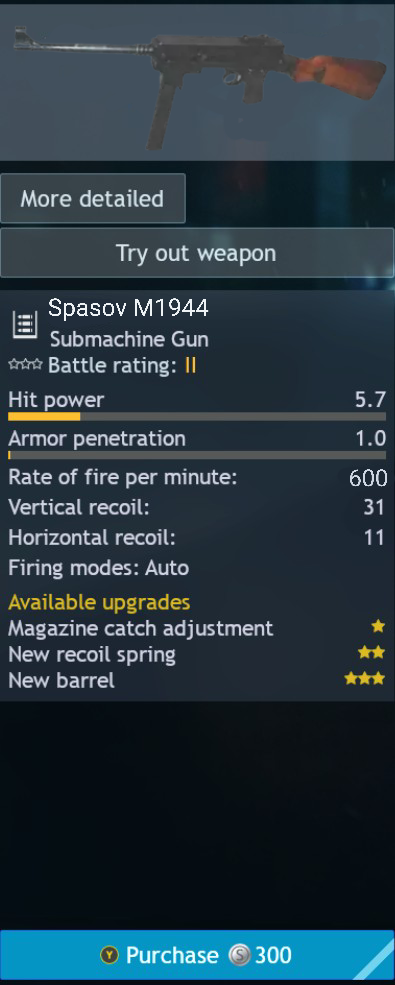
Without any upgrade (rate of fire does not increase)
Tech-Tree
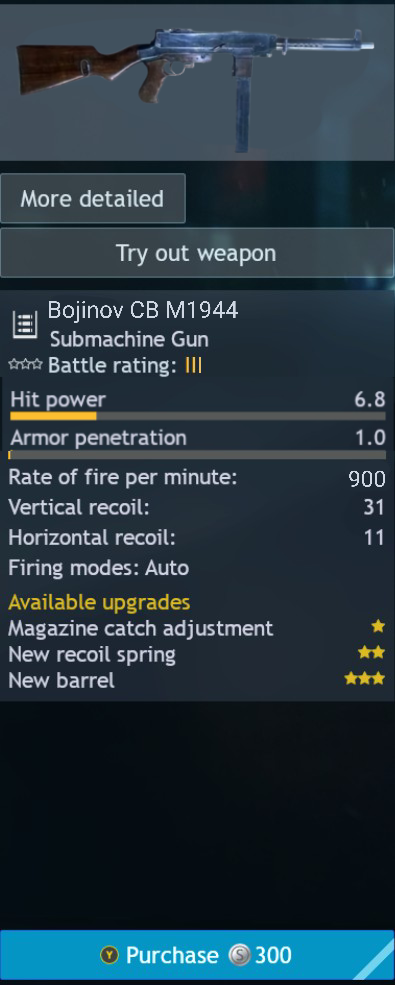
Full upgrade, Decrease damage to 6.7
